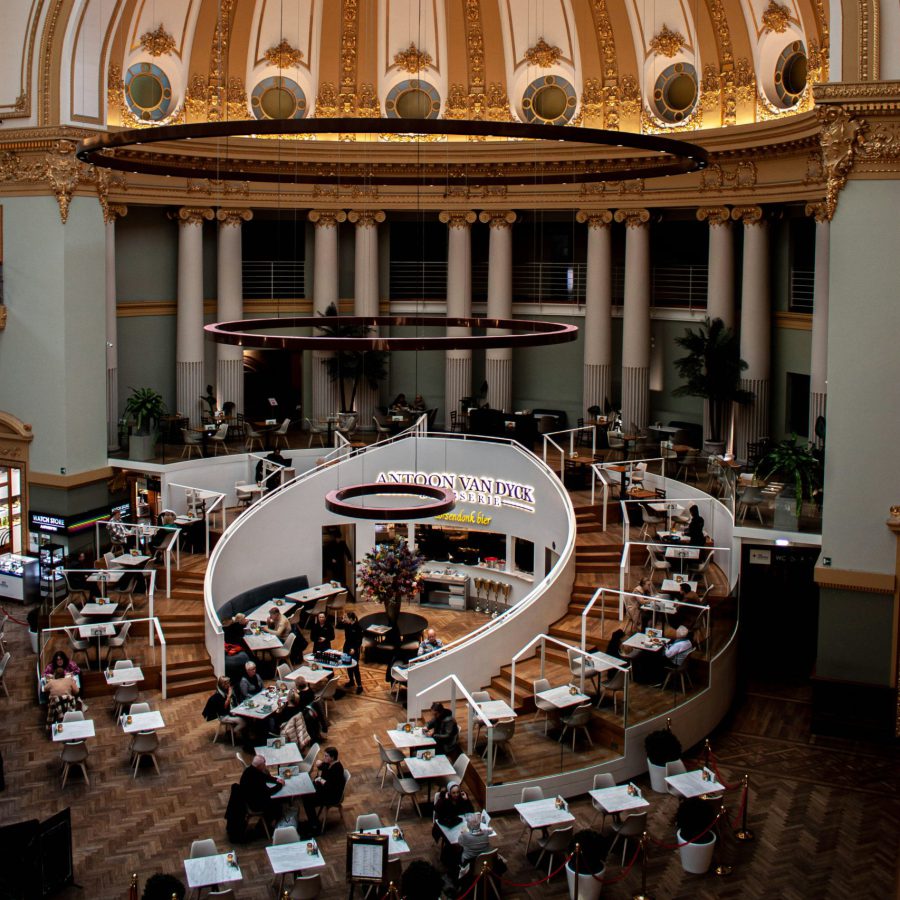Moving toward better PPP practice
infrastructure
Public-private partnerships (PPPs) are an important tool for realizing public infrastructure and addressing pressing societal challenges. Yet they do not appear to be easy to get off the ground. Especially the unnecessary increase in transaction costs is an obstacle. Commissioned by the Flemish government, Erik Paquay (Rebel) and Steven Van Garsse (law firm Equator) investigated where the room for improvement lies.
Erik and Steven, exactly what experience do Rebel and Equator have with the PPP practice, and what is the current state of affairs on this issue in Flanders?
Erik Paquay: “Rebel and Equator have both been active in this field for a long time. Rebel advises both the public and the private side. Among other things, we assist governments in putting DBFM (Design, Build, Finance, Maintain, etc.) contracts on the market. We advise private parties on submitting bids, where our focus is more on financing and bidding strategy. Finally, on behalf of the government, we regularly conduct studies to improve current PPP practices.
‘The same applies to Equator, but with a focus on the legal aspects.’
Erik: ‘The PPP theme is very topical. The Flemish market is currently running many projects that are being tendered out in PPP form, especially DBFM (Design, Build, Finance, Maintain, ed.). This involves both infrastructure and buildings.’
Steven: “Recently several large PPP projects, including for school construction, have returned to the market. So it pays to get to work on the recommendations and improve current practice.’
What prompted this study and what assignment were you given by the Flemish government?
Erik: ‘The concrete reason for this assignment was a structural consultation between the Flemish government and contractors. This showed that contractors are concerned about the way the government currently handles PPP projects.’
Steven: “Setting up PPP projects is enormously expensive. It involves a lot of transaction costs. The question was: what can we do to make that process more efficient and reduce those costs? For the study, we mapped out a PPP process by phase and step, to see what they would look like in an ideal world. The goal was not to name what went wrong in concrete projects, but to draw general lessons to improve PPP practice.’
Specifically, what concerns do private parties have?
Steven: “A major concern is the lead time of procedures, which take a long time. Moreover, the timing is regularly adjusted. In practice, it means that entire teams have to be maintained on both the public and private sides, and that costs a lot of money. Another recurring theme is standardization because that too can lead to a reduction in transaction costs. There is also a demand for a thorough policy on bidding fees. When long PPP procedures are stopped, proposers lose a lot of money.’
Erik: “There is a stop-and-go mentality. Announced projects are given a timeline, but for one reason or another take much longer. This unpredictability makes it difficult for the market to organize. Fewer and fewer parties want to participate. The high cost is a barrier. A bidding fee is also in the government’s interest. It could help maintain a healthy PPP market.
‘In addition, there is increased attention to risk allocation in this type of project. The past two years saw a period of huge price increases, in construction materials and wages. In the short term, financing costs have also skyrocketed. Things have gone thoroughly wrong in some projects, and contractors are no longer taking risks lightly.
‘It is therefore good if the government is more cautious about shifting risks to the contractor when reviewing prices. It had better look closely at the macroeconomic risks in a project and seek a balanced allocation of risks. We note that our recommendations on this point are already being taken on board.
Your report also focuses on permitting issues, which are affecting the PPP market. What possible solutions are there?
Steven: ‘Waiting for permits creates a lot of uncertainty. We started looking at how you can deal with that differently, by structuring permits more.
‘For a project that has to be realized in a tight urban context, the government itself could do the application. That gives more certainty for the rest of the process. But that remains a trade-off because the added values of PPPs lie precisely in the creativity of the private sector. The playing field gets smaller if the permit is already there.’
Erik: “That option is also more suitable for infrastructure projects because it is the government itself that applies for the permit. Building projects benefit more from freedom by design. The problem is that permit applications have become extensive files that include a lot of detail. You could work with a kind of outline permit, which still leaves freedom to make certain choices.’
What are the added values of PPP compared to traditional construction projects?
Erik: “Combining disciplines – design, construction, and maintenance – leads to better quality and value for money. Smarter solutions emerge when the government demands an integrated approach from the market. Moreover, the government’s capacity to supervise projects itself from A to Z is limited. PPPs make a larger volume of projects possible, where one can steer on quality.’
Steven: “PPP projects often have a very long term. Market parties will therefore try to match the various components optimally, for example by making the best choices in materials and maintenance for the next 30 years. We then speak of lifecycle optimization. A classic procurement project lacks the incentives for such a cycle. In times where sustainability, impact, and savings are gaining in importance, this is an important advantage of PPP.’
What are the most important conditions for the success of a PPP project?
Steven: “A successful PPP project needs a well-thought-out process with sufficient competition, without driving up costs for the market or government parties. One wants to ask for enough things, but not too much. The public party must have confidence that the contractor will make a success of the project. Good preparation and sufficient support through stakeholder management are necessary.’
Erik: “Dialogue during the tender is also very important. We have noticed that tenderers and government are not sufficiently familiar with each other’s visions. The government is not always mindful of the risks that tenderers face. I think there is a need for openness and a willingness to discuss things thoroughly with each other and to make adjustments during the process if necessary.
‘That also ties in with the overarching message: that structural consultation is needed between the private sector and the public sector. For this study, we brought together a sounding board group with representatives from the private and public sides. That worked well. It would be even more valuable if this consultation could be perpetuated.
Steven: “There is of course consultation between the Flemish government and the construction sector, but that is general in nature. Here a consultation has been set up based on specific themes, where parties dare to name what bothers them and look for solutions together.’
